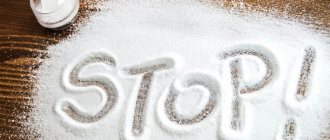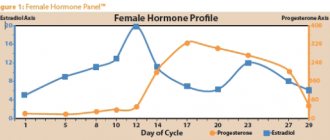A common problem that many girls face. Spoiler: it needs to be solved as a whole. All methods are simple - read the material and choose yours.
The human body contains about 60% water, which is important for all biological processes. It is recommended to consume a sufficient amount of liquid every day - about 2.0-2.5 liters. But many people note water retention, which causes weight gain and swelling. We give detailed instructions on how to remove fluid from the body quickly.
Swelling or excess water: what's the difference?
Correcting body weight by removing excess fluid is necessary for professional athletes and bodybuilders, for whom it is important to meet a certain weight category or improve their appearance.
Excessive water retention, which forms edema, is another problem. Although in most cases they are harmless, persistent swelling can be a symptom of serious medical conditions such as heart, liver or kidney disease. Women experience fluid retention during the luteal phase of the menstrual cycle and during pregnancy.
Our material contains advice for healthy people and athletes. If you have severe swelling in your legs or arms, see your doctor. It is important to exclude kidney pathologies and serious endocrine metabolic diseases.
Regular exercise
This is one of the best ways to reduce weight quickly and safely. Any form of exercise increases sweating, which means the body loses water. The average fluid loss during one hour of training is 0.5-2 liters per hour, depending on the temperature in the room and clothing. During exercise, the body also transfers water to the muscles. This helps reduce the amount of fluid under the skin, improving the appearance and eliminating pastosity (swelling of the subcutaneous tissue).
When worrying about how to remove excess fluid from the body, we must not forget about adequate water consumption during exercise. Otherwise, serious dehydration may occur and you will feel worse. A sauna helps increase moisture loss and eliminate swelling. It activates sweating with fluid loss through the skin. If you go to the sauna after class, the effect will increase.
How to remove excess water from the body
Excess water in the body leads to swelling, bags under the eyes and weight gain.
Excess fluid in the body indicates health problems - perhaps the kidneys are not doing their job or the heart has begun to fail. Of course, you should see a doctor. But most often, water is retained simply due to poor nutrition and consumption of large amounts of salt.
Causes:
- Lack of water. Everyone has heard that you need to drink at least 2 liters of water during the day, but few people fulfill this condition. To meet the daily need for water, the brain signals the body to accumulate water. Try keeping a bottle of water next to you and drinking it throughout the day. Drink little but often. After two weeks, the body will get used to it and stop storing excess water.
- Diuretic drinks. Alcohol (including beer) has a strong diuretic effect. Tea, coffee and carbonated drinks are also available. In large quantities, they can lead the body to dehydration. As a result, orginism stores such precious water in edema. Try to drink more clean water.
- Excess salt. One molecule of salt binds 20 molecules of water and settles in fat cells. They increase in volume - this is how “excess weight” appears. In addition, the body requires additional water to remove harmful salt from tissues. The circle closes, the swelling does not go away. Eat less salty foods - chips, salted fish, nuts for beer. And again, drink more water.
- Drink at night. Water drunk after 20.00 greatly overloads the kidneys. In the morning your face will be swollen. Try to drink most of your water before six to seven o'clock in the evening.
Products that remove fluid from the body:
- Watermelon in summer. It not only removes water, but also cleanses the kidneys well and improves their functioning. Melons and cucumbers will also help remove excess fluid from the body. Organize watermelon or cucumber days once a week, you will notice the effect on the first day.
- In spring, birch sap does not linger in tissues and quickly removes salt and toxins. Drink a glass of it three times a day.
- Green tea and hibiscus are also known as mild diuretics. Unlike black tea, you can and even need to drink it in large quantities.
- Oatmeal and rice porridge are also excellent for removing water. Rice is low in sodium (which retains water) and high in potassium, which removes salt. Before important competitions, professional athletes do a dry diet - they eat only unsalted rice porridge for several days.
- Fresh fruits and vegetables do not contain salt. The more you eat them, the better your salt balance will be. Beetroot and cabbage juice helps against swelling.
- Eat foods that remove water from the body - containing potassium: pumpkin, zucchini, cabbage, eggplant, apples, apricots, dried fruits.
A sauna or steam bath will help remove excess water from the body. Excess water and salt will come out with sweat. Regular visits to the sauna will help you lose weight.
Physical exercise speeds up metabolism and helps remove fluid through the sweat glands. Running, walking, aerobic exercise, and cycling work well against swelling of the legs - the leg muscles contract and the swelling goes away.
And once a day for 1-2 hours it is useful to raise your legs above the level of your heart - for example, when lying on the sofa, place a pillow under your feet. The swelling will go away quickly. This is especially useful for older people and those who have a sedentary job.
Herbs and infusions to remove water from the body.
- Infusion of birch leaves. Pour crushed dried leaves with 2 tablespoons of boiling water and let steep for 30 minutes. Strain the infusion and add soda at the tip of a knife. Drink 1 teaspoon three times a day.
- Rosehip or lingonberry tea: Brew dried berries as you would regular tea and drink half a cup two to three times a day.
- Dill seeds are a strong diuretic: pour 1 tablespoon with a glass of boiling water and leave for half an hour. Strain, drink 1 tablespoon three times a day.
- You can cook a compote from dry apple peels and drink half a cup 5 times a day.
Getting enough sleep
Scientists have proven that adequate sleep is important for metabolism, along with physical activity and diet.
During sleep, the sympathetic nervous system activates the kidneys, which regulate the amount of sodium and fluid in the tissues. Adequate sleep regulates fluid levels and reduces water retention by subcutaneous tissue. On average, you need to sleep about 7-9 hours a day.
Causes
Ascites can occur in different ways and be associated with various diseases; ascites is separately distinguished in oncology. The most common cause of cancer is cholestatic ascites (liver damage). Fluid accumulates as a result of damage to the liver parenchyma, which, increasing in size, compresses the venous vessels and leads to fluid leakage into the abdominal cavity. Ascites can also develop with cirrhosis. The mechanism of occurrence is based on the sweating of liquid due to a change in pressure difference. There are cases when a patient experiences swelling of the penis and scrotum, as well as the appearance of an inguinal or umbilical hernia.
Stress Reduction
Constant stress increases the concentration of the hormone cortisol in the blood plasma. One of its effects is water retention in tissues, which causes swelling. This is because the stress hormone stimulates the activity of ADH (antidiuretic hormone), which retains fluid. The basis of the work of ADH is signals to the kidneys about salt retention, which automatically provokes retention - less urine is released, water remains in the tissues and subcutaneous tissue.
Eliminating stress helps normalize the functioning of ADH, relieves its negative effects on the kidneys, allowing urine to be produced more actively, removing excess moisture.
Correcting Electrolyte Imbalances
If the body does not receive enough electrolytes - ions that have an electrical charge - a fluid imbalance can occur. Positive ions are especially important - potassium, magnesium and sodium, negative chlorine. If the concentration of electrolytes in plasma or cells sharply increases or decreases, this provokes a violation of fluid flow. Swelling inside cells or in the intercellular space is possible.
How to remove water from the body during edema, if the cause is an imbalance of ions
It is important to correlate salt intake with fluid intake; if there is a lot of moisture, more salt is needed, and vice versa.
When playing sports or living in a hot climate with high air humidity, it is necessary to consume additional portions of electrolytes to replenish the loss of salts during sweating.
If a person consumes a lot of salt in food or supplements, it is necessary to drink enough water. Otherwise, the salt will attract, retain fluid and cause swelling.
Taking extra magnesium
Another key mineral needed to maintain fluid balance in the body. It not only regulates the volume of water in plasma or intercellular fluid, but also normalizes the functioning of the nervous system and the transmission of impulses between cells. In the human body, magnesium is involved in 600 different metabolic processes, reducing body weight and the severity of PMS in women, relieving stress.
It actively interacts with sodium and potassium, controlling the filtration of fluid by the kidneys and its reuptake (reabsorption) under conditions of dehydration. Taking supplemental magnesium helps in weight control by removing water and suppressing stress reactions.
What not to do to remove excess fluid from the body
Many people want to quickly lose weight by quickly removing fluid from the body, without thinking about the possible harm to their health.
What you shouldn’t do so as not to bitterly regret it later:
- engage in self-diagnosis and treatment, especially when it comes to diuretics and other types of medications;
- get carried away with teas for weight loss, the action of which is often based only on the diuretic effect;
- introduce restrictions on drinking, especially clean water. The result will be exactly the opposite.
There are many ways to remove excess water from the body to lose weight. They have only one thing in common - before you start using them, you need to get all the advice from a specialist.
Ascites of the abdominal cavity Glaucoma Intestinal infection in children Use of ASD fraction 2: benefits and harm to humans Pancreatitis Sinusitis: symptoms and treatment in adults
Taking Dandelion Extract
Common dandelions are a medicinal plant that has a natural diuretic effect. Infusions and decoctions of dandelion root are used at home to introduce excess moisture to reduce the severity of swelling.
The active substances in the decoction signal the kidneys to more actively filter water and salts, increasing the volume of urine excreted. Over the next 5 hours, the work of the renal glomeruli intensifies, filtering more urine. It is important to consult your doctor first. There are certain restrictions - pathologies of the kidneys, heart or liver.
Consuming more regular water
This helps eliminate fluid retention in tissues and cells. The body strives for an ideal balance - optimal intake and elimination. If a person is constantly suffering from dehydration, the body will regularly turn on mechanisms to retain fluid so that metabolic processes do not stop.
If a person achieves optimal balance, the body actively removes excess water through the kidneys and through the skin, which eliminates swelling and prevents its occurrence. Consuming enough water is not limited to preventing edema. This is necessary to activate the breakdown of fat and proper brain function.
- Reference point - feeling thirsty
. It is important to drink a few sips of plain water every time the urge arises, but you do not need to drink 1-2 glasses at a time. In hot weather or during exercise, fluid consumption increases.
- Another landmark - urine color
. If it is pale yellow in color and transparent, it means that the body receives the optimal amount of water and the tissues are fully hydrated.
Methods for determining “dry weight”
There are several methods for determining “dry weight”:
- empirical (experimental) method. Determination of dry weight occurs experimentally. The doctor monitors the patient during the procedure and records the deterioration of the condition;
- instrumental. Ultrasound monitors changes in the diameter of the inferior vena cava, the device measures the bioresistance of tissues. Biofeedback dialyzers are being introduced. The device measures blood pressure every five minutes, reducing the amount of fluid removed in accordance with the dynamics observed during previous procedures;
- blood volume monitoring. A way to track changes in blood volume relative to baseline using hematocrit.
There is no universal formula for calculating fluid removal; the calculation is carried out experimentally.
The recommended amount of fluid removed is 3-5% of body weight. In practice, doctors use several methods simultaneously. The instrumental method consists in most cases of determining the bioimpedance of the calf muscle tissue. The main advantage is the ability to assess extracellular, intracellular, and total body fluid volume.
Optimal dry weight is achieved gradually over three or more treatments. Then 500 grams are added to the resulting weight to prevent excessive ultrafiltration and the development of hypotension during repeated procedures.
Unfortunately, it is impossible to determine a patient’s dry weight once over a long period of time. A person's weight is subject to changes due to many reasons. For example, seasonal fluctuations in weight: in winter, weight increases, in summer it decreases. Weight loss and gain may be associated with concomitant diseases, so the amount of fluid excreted needs to be regularly adjusted.
Thus, the search for the “golden mean” - the optimal amount of fluid removed and determination of dry weight is the key to the success of the hemodialysis procedure and the patient’s well-being.
Eating Selected Healthy Foods
The easiest way to remove water from the body for weight loss is to eat more foods that regulate fluid balance (especially those rich in potassium)
. This mineral stimulates the kidneys to excrete excess sodium, and with it, water.
- Dark green leafy vegetables
- Beans
- Bananas
- Avocado
- Tomatoes
- Yogurt or other dairy products.
Magnesium supplements or products containing the following substances help in the fight against edema
- dark chocolate;
- dark green leafy vegetables;
- nuts and whole grains.
There are a number of herbal products that have a mild diuretic effect:
- corn silk;
- horsetail;
- parsley;
- hibiscus;
- garlic;
- fennel;
- nettle.
Although fluid retention does not cause bloating or discomfort, limited consumption of foods that cause flatulence is also beneficial for edema. The dangerous group includes highly processed foods with sufficient fiber content, beans and dairy products (with lactose). It is worth choosing low FODMAP foods for a while to see the effect.
Treatment
First of all, a diagnostic test is performed. Before surgery, you must empty your bladder or install a Foley catheter. Next, the anterior abdominal wall is treated with an antiseptic and anesthesia is administered. To do this, a needle with an anesthetic is inserted at a point located on the white line of the abdomen in the middle between the navel and the pubic symphysis.
Anesthesia is performed in layers deep into the peritoneum. Using a scalpel, an incision is made in the skin and aponeurosis of the rectus abdominis muscle, about 1-1.5 cm in size. Next, a puncture of the peritoneum is made with a trocar, and it penetrates into the abdominal cavity. The trocar stylet is removed, and a rubber or PVC tube is inserted through the tube. This is the so-called “fumbling catheter”. About 10 ml of sterile liquid is injected through it, which is immediately aspirated.
If there is blood or bile in the abdominal cavity, they will also be found in the resulting fluid, and this is a strict indication for emergency surgery. If the resulting liquid does not contain impurities, the catheter is left for a couple of days as a control drainage.
Therapeutic puncture. The technique for performing therapeutic punctures is the same as when performing a diagnostic test. The trocar grater is removed after the PVC tube has been inserted through it. Ascitic fluid can flow freely through the left drainage. A sharp drop in pressure should not be allowed, as this can lead to collapse, so periodically the drainage tube must be clamped for a couple of minutes. After complete removal of fluid from the abdominal cavity, the drainage can be removed and the incision can be closed with a silk ligature. Or the drain can be left in place for a couple of days to monitor and remove any newly accumulated fluid.
Reducing carbohydrates
Another option for removing excess water from the body. Simple sugars are stored in the muscles and liver in the form of glycogen, which also retains water in the tissues. For every gram of glycogen in the body, there are 3-4 grams of water. This explains why people immediately lose weight when they switch to a low-carb diet, which reduces glycogen stores.
Carbohydrates also stimulate an increase in insulin levels, which increases sodium retention and water reabsorption in the kidneys. Low-carbohydrate diets cause insulin levels to decrease and excess sodium and water to be introduced into the kidneys. Try changing your carbohydrate intake and see how the swelling goes down.
Causes of imbalance
Disturbances in water-salt balance are not only a lack of salts and water in the body, but also their excess, which manifests itself, for example, in the form of edema. At the same time, dehydration is fraught with thickening of the blood and the formation of blood clots. This risk occurs even when the fluid deficiency is only 20%.
Of course, the content of salts and fluid in the body is not a constant value. It depends, among other things, on the season.
This balance can be “shattered” for other reasons:
- Unbalanced diet (excess carbohydrate foods);
- Improper drinking regime;
- Alcohol abuse;
- Intense physical activity;
- Cardiovascular diseases;
- Disorder in the functioning of the thyroid gland;
- Kidney and liver diseases;
- Hormonal imbalances;
- Diabetes;
- Use of diuretics;
- Toxicosis during pregnancy;
- Premenstrual syndrome;
- Sedentary lifestyle;
- Venous insufficiency;
- Diarrhea and vomiting;
- Increased body temperature.
In addition, there is a hidden reason for the disturbance of water-salt balance in the body. Thus, a detailed analysis of blood biochemistry can show the disorder of individual ions in the blood plasma.










